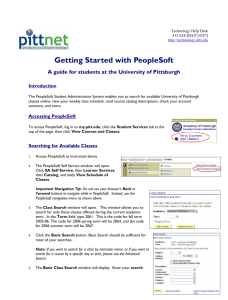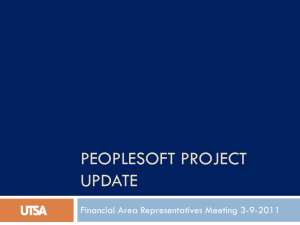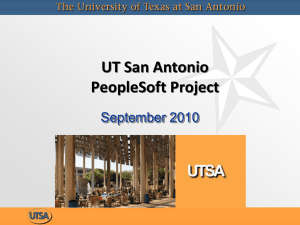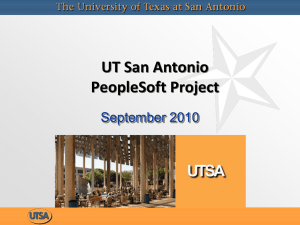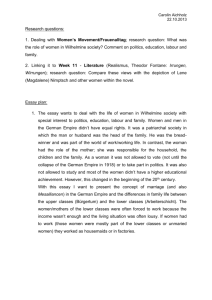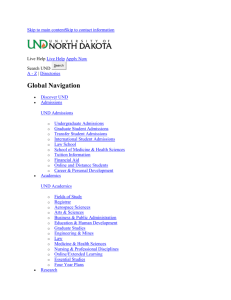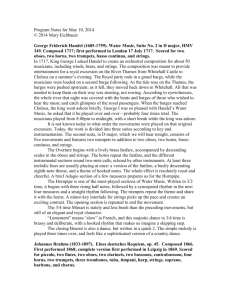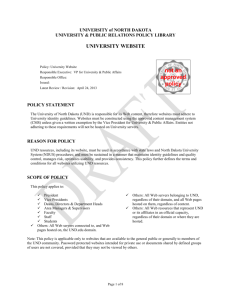PeopleSoft Academic Structure
advertisement
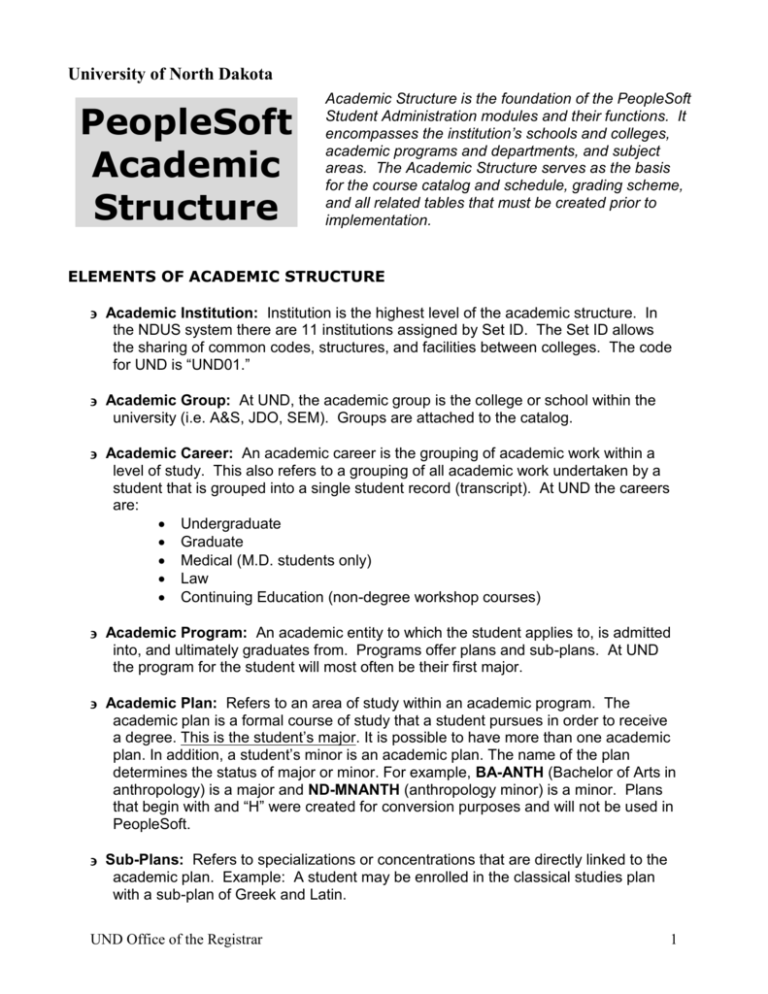
University of North Dakota PeopleSoft Academic Structure Academic Structure is the foundation of the PeopleSoft Student Administration modules and their functions. It encompasses the institution’s schools and colleges, academic programs and departments, and subject areas. The Academic Structure serves as the basis for the course catalog and schedule, grading scheme, and all related tables that must be created prior to implementation. ELEMENTS OF ACADEMIC STRUCTURE Academic Institution: Institution is the highest level of the academic structure. In the NDUS system there are 11 institutions assigned by Set ID. The Set ID allows the sharing of common codes, structures, and facilities between colleges. The code for UND is “UND01.” Academic Group: At UND, the academic group is the college or school within the university (i.e. A&S, JDO, SEM). Groups are attached to the catalog. Academic Career: An academic career is the grouping of academic work within a level of study. This also refers to a grouping of all academic work undertaken by a student that is grouped into a single student record (transcript). At UND the careers are: Undergraduate Graduate Medical (M.D. students only) Law Continuing Education (non-degree workshop courses) Academic Program: An academic entity to which the student applies to, is admitted into, and ultimately graduates from. Programs offer plans and sub-plans. At UND the program for the student will most often be their first major. Academic Plan: Refers to an area of study within an academic program. The academic plan is a formal course of study that a student pursues in order to receive a degree. This is the student’s major. It is possible to have more than one academic plan. In addition, a student’s minor is an academic plan. The name of the plan determines the status of major or minor. For example, BA-ANTH (Bachelor of Arts in anthropology) is a major and ND-MNANTH (anthropology minor) is a minor. Plans that begin with and “H” were created for conversion purposes and will not be used in PeopleSoft. Sub-Plans: Refers to specializations or concentrations that are directly linked to the academic plan. Example: A student may be enrolled in the classical studies plan with a sub-plan of Greek and Latin. UND Office of the Registrar 1 EXAMPLES OF UND ACADEMIC STRUCTURE Undergraduate PeopleSoft Academic Structure Element Academic Institution Academic Group Academic Career Academic Program Academic Plan Academic Sub-Plan UND Equivalent University of North Dakota Arts & Sciences Undergraduate UGENG: English BA-CLAS: Classical Studies OPT-CLASG: Greek Graduate PeopleSoft Academic Structure Element Academic Institution Academic Group Academic Career Academic Program Academic Plan Academic Sub-Plan UND Equivalent University of North Dakota Engineering & Mines Graduate GREGN: Engineering PHD-ENGR: Engineering None The academic structure setup determines the inter-relationships of various PeopleSoft tables, functions, and panels. This structure will impact the development of the tables used in defining campus locations, academic organizations, subjects, catalog, and course schedule. Locations & Campuses: Campuses belong to a single institution and use the same course catalog, produce a common transcript, and are usually associated with separate physical locations. Currently we are using only one campus code of “Main.” Academic Organization (departments): Defines how an institution is organized from an administrative perspective. The Academic Organization information is used to create a Tree Manager. The tree controls security levels and access to certain PeopleSoft functions and panels. Subjects: An academic subject is a specific area of instruction within an Academic Organization. For example, if the course is MATH 165, Math is the subject area. This is tied back to the Academic Organization Tree (department). Academic subjects are also linked to the course catalog. UND Office of the Registrar 2 Catalog: Before the course catalog is developed, the institution codes, academic groups, subjects, campuses, academic organization, and academic career must be defined. The course catalog panel group contains panels that specify everything you need to enter for a course: the definition, number of credits, contact hours, topics, prerequisites, etc. The course catalog information provides the template for scheduling classes. The information entered rolls forward to the class schedule. Schedule of Classes: The class schedule is generated using information from the course catalog. PeopleSoft will allow you to roll classes from term to term, add new courses to the schedule, and revise those already scheduled. Creating the schedule includes Terms and Sessions. Term is defined as the approved start and end date of the semester with a career. Sessions are created within a term for the start and end dates of courses. Each term is associated with an academic year. Term: The term is defined as the start and end date of the semester. These dates are approved by the North Dakota State Board of Higher Education and affect financial aid, enrollment verifications, and other academic and financial processes. Sessions: Sessions are created within a term and may have different start and end dates from the term. Academic dates, such as last day to add or to drop, and refund dates are determined by the session. Each course must be attached to a session and a term. T:/ConnectND_Reg Off/Training/Academic Structure training2 UND Office of the Registrar 3

